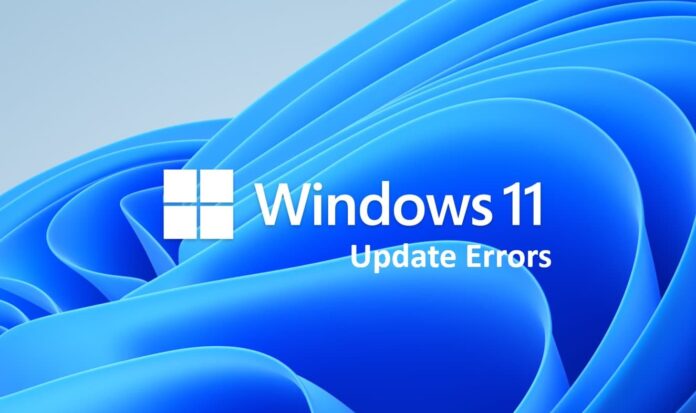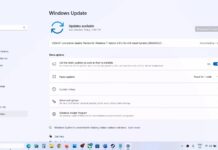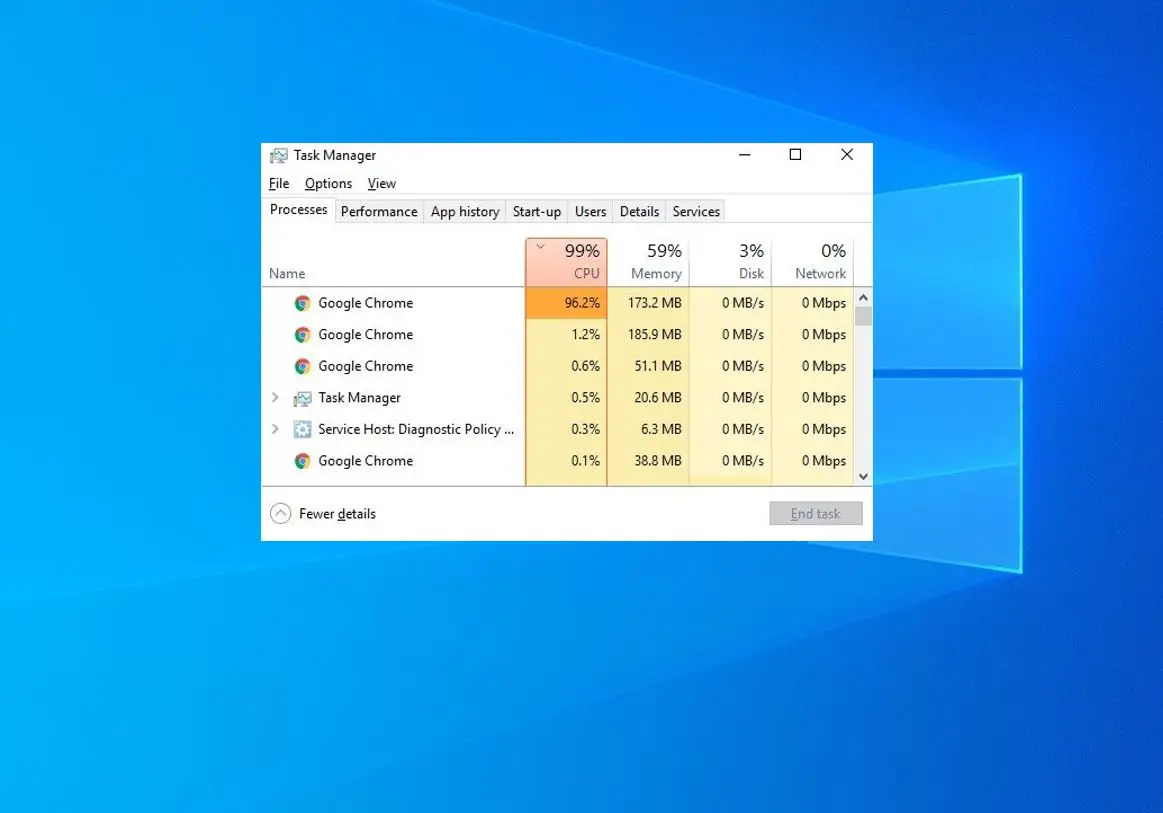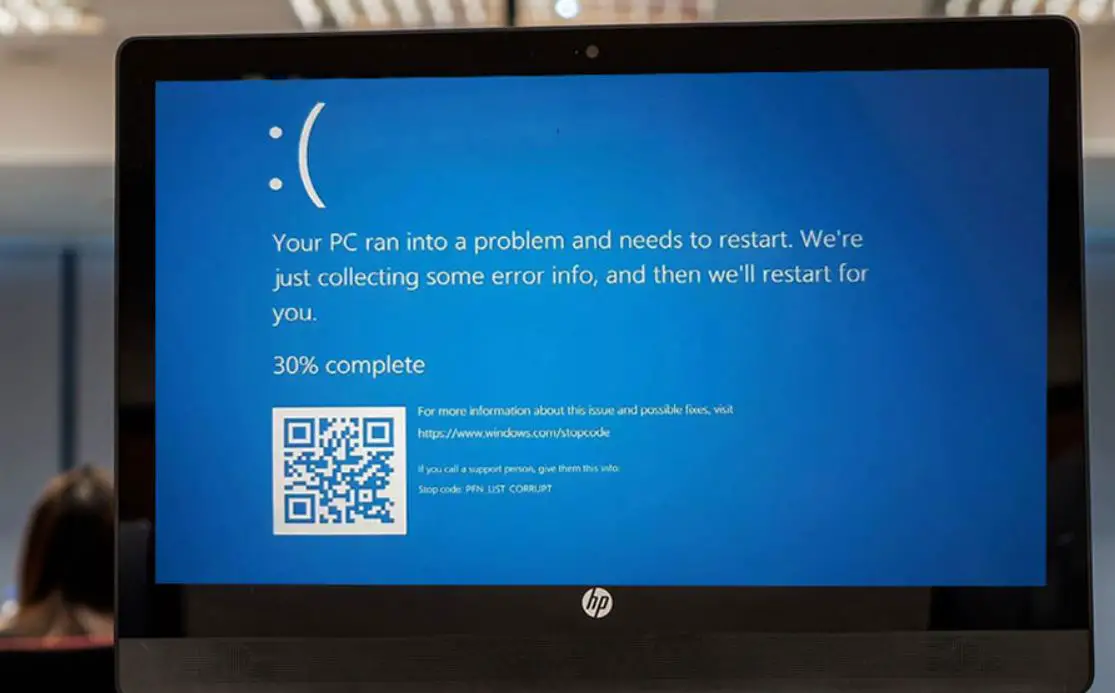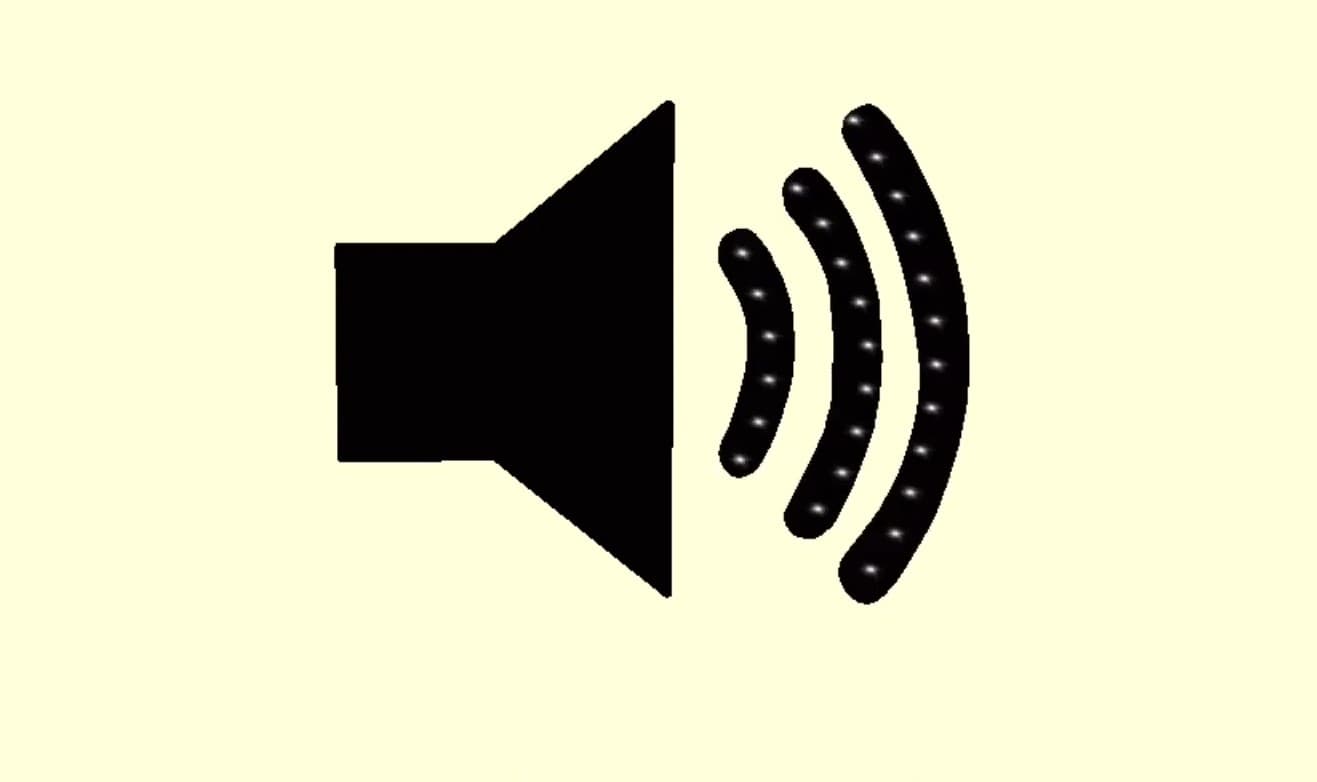Microsoft regularly releases Windows updates to address security vulnerabilities, improve system stability, fix bugs and glitches, and introduce new features. The update service keeps Windows 11 PC up to date by automatically downloading and installing the latest patches, driver updates from Microsoft. However, at times you may encounter problems with Windows Update, such as Windows update stuck download, or fail to install with errors. Windows 11 Update errors can occur due to various reasons, such as corrupted cache, faulty services, or damaged files. This article explores various ways you fix those update errors in Windows 11.
Contents
Fix Windows Update Errors in Windows 11
Poor or unstable internet connection to Corrupted Update Files, Insufficient Disk Space or Third-Party Software Interference are some of the most common reasons behind Windows update problems.
- Poor internet connectivity or network interruptions can disrupt the update process.
- Over time, the Windows Update cache may become corrupted, leading to stuck or failed update installations.
- Incomplete or corrupt downloads in the update cache can hinder the installation of new updates.
- Interference from third-party antivirus or security software may hinder updates.
- Lack of free storage space on the system drive can prevent updates from being installed.
Check Internet Connection
A stable internet connection is required to download Windows update files from Microsoft. If the connection is intermittent or slow, it can lead to incomplete downloads and update failures. To fix Windows update problems first you need to check and ensure the internet connection is working.
Ensure a stable and reliable internet connection to prevent interruptions during the update process.
- Ensure that your device is connected to a reliable and high-speed internet connection.
- Restart your router or modem to resolve potential connectivity issues.
- If connected to wifi network, take your device closer to the router for a better signal.
- Consider using a wired connection for more stability, especially when dealing with large update files.
- If using a VPN, we recommend disconnect it and try to check for updates again.
Press the Windows key + R, type ping google.com -t, and click ok. if any data packets are lost during transmission, indicating network issues.
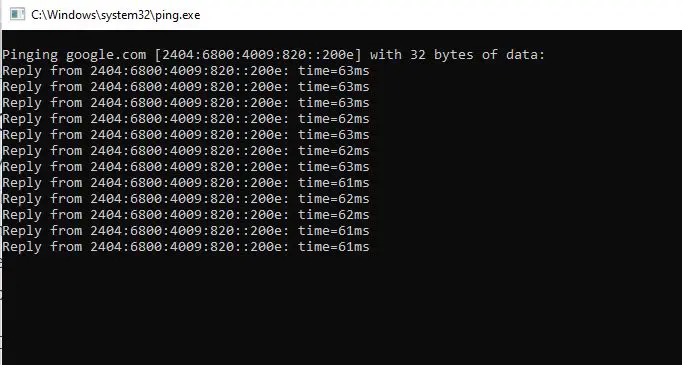
Free Up Storage Space
Insufficient storage space on the system drive can hinder the installation of updates. Free up storage space (On C drive) ensures that the updates have room to be downloaded and installed.
- Go through your files and delete those you no longer need, such as old documents, downloads, or unused applications.
- Run the built-in Disk Cleanup tool on Windows to remove temporary files, system cache, and other unnecessary items taking up space.
- Consider moving large files to an external drive to free up space on the system drive.
- Review your installed programs and uninstall applications that you no longer use or need.
Disable Third-Party Security Software
Third-party antivirus or security software can interfere with the update process. Temporarily disabling such programs ensures isn’t causing any update issues.
- Locate the security software icon in the system tray.
- Right-click on the icon and choose the option to disable or pause protection.
- Remember to re-enable the security software after the update is complete.
Alternatively, you can uninstall your third-party antivirus software. Press Windows key + R, input appwiz.cpl in Run’s Open box, and click OK. Then you can remove the antivirus software by selecting it in Programs and Features and clicking Uninstall.
Reset Windows Update Components
The Windows Update cache may accumulate corrupted files over time, leading to update errors. Resetting those components is another potential solution for numerous update issues. It provides a clean slate for downloading and installing updates.
Update errors can often be due to corrupted Windows Update components.
Stop the Windows Update service:
- Press the Windows key + R, and type services.msc, then ok.
- locate “Windows Update,” right-click, and select “Stop.”
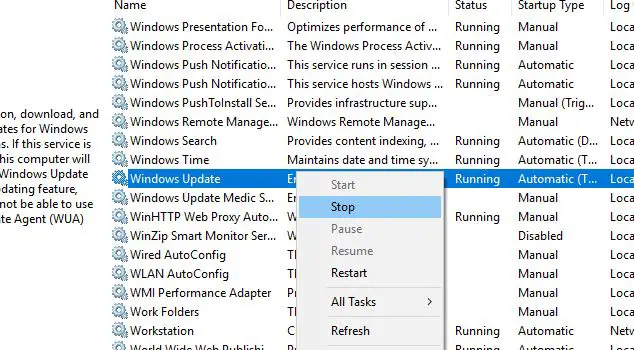
Clear Windows Update Cache files
- Press Windows key + E to open File Explorer and Navigate to C:\Windows\SoftwareDistribution/downloads
- Here delete all files folder on Download folder, press Crl + A to select all then hig enterkey.
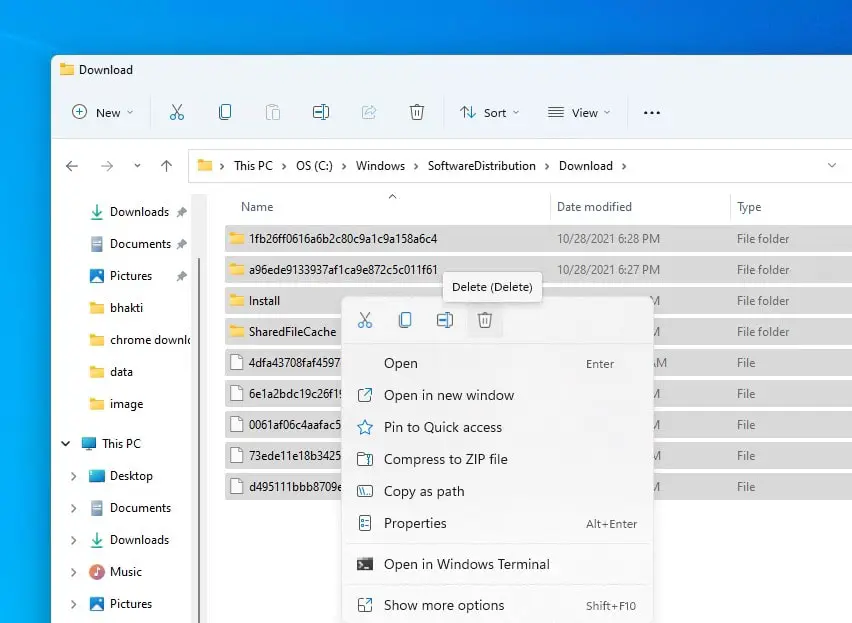
Restart the Windows Update service:
- Go back to the Services window, right-click on “Windows Update,” and select “Start.”
Also, you can also use a third-party tool to reset Windows Update components. There are many tools available online that can help you with this task, such as Windows Update Reset Tool, Fix WU Utility, or Reset Windows Update Agent.
Once done reboot your computer and try install Windows updates again
Windows Update Troubleshooter
The dedicated tool is designed specifically for fixing the Windows update process. Running the built-in Windows Update Troubleshooter can automatically identify and fix common issues with the update process, streamlining the troubleshooting process.
- Press the Windows key + I to open the settings app,
- Go to System then troubleshoot and click on Other troubleshooters,
- Click the Run option for the Windows Update troubleshooter.
It helps identify and fix problems related to update downloads, installations, and general update functionality.
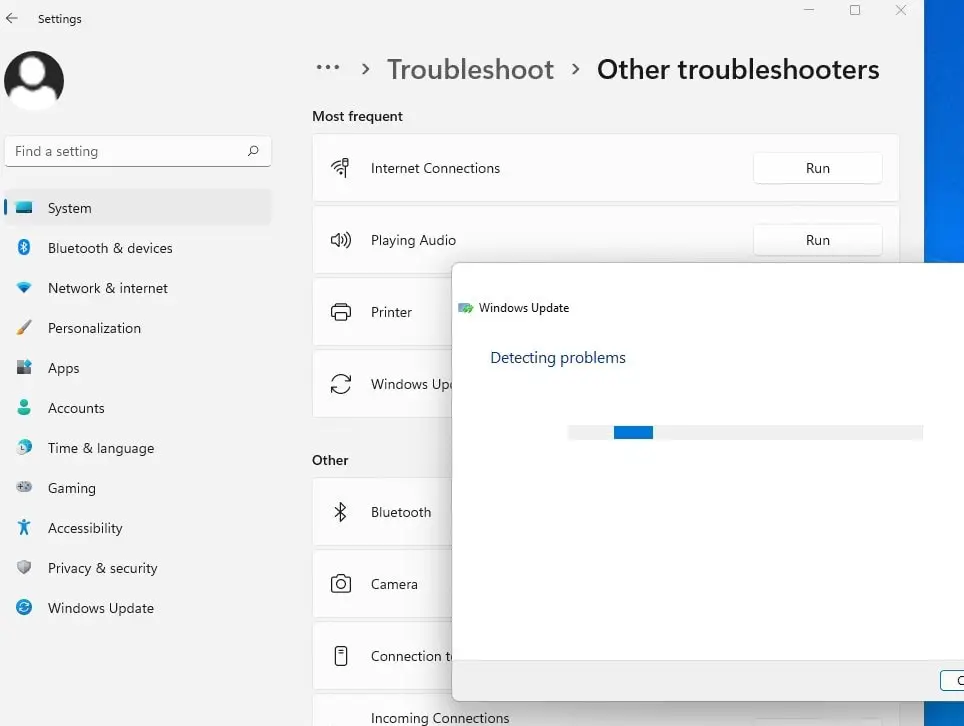
Repair system files with DISM and SFC
If for some reason, system files get corrupted or damaged, it may prevent the Windows update service from functioning properly and result Windows update stuck download or fails to install. You can run Deployment Image Servicing and Management (DISM) and System File Checker (SFC) tools to scan and repair system files and resolve issues with Windows Update.
- Press Windows key + S, type cmd, and select run as administrator,
- First, run the command dism.exe /Online /Cleanup-image /Restorehealth
- Next, run the system file checker command sfc /scannow
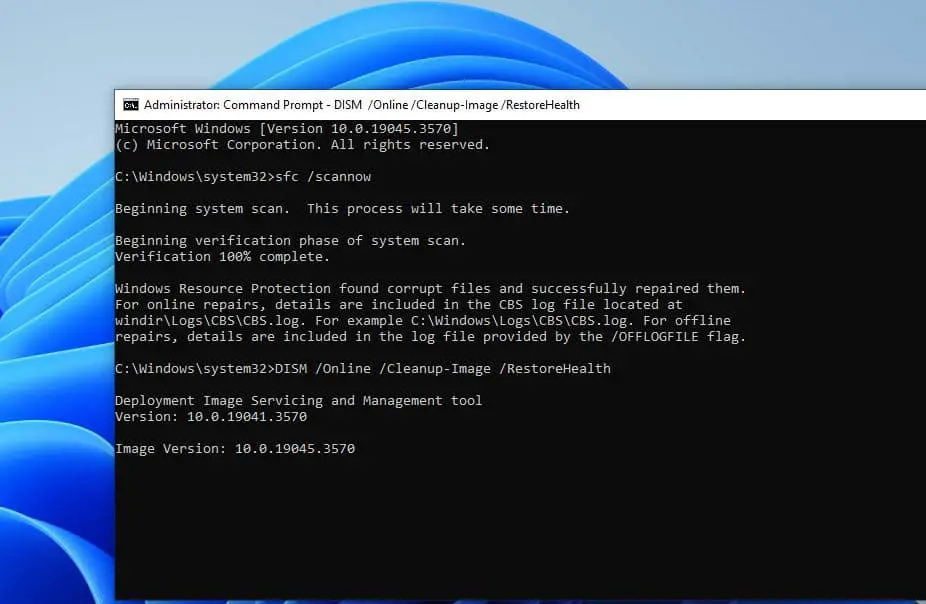
Let the scanning complete 100%, Once the operations are completed, check if the Windows Update components are functional again.
Manually Download and Install Updates
If the above solutions didn’t fix the Windows update error, you should try manually download and installing the latest Windows updates. Manually downloading and installing updates from the Microsoft Update Catalog ensures that specific updates are applied without relying on the automated Windows Update process.
- First Visit the Microsoft Update Catalog website.
- Search for the required update using the KB number.
- Download the update and install it with administrative privileges.
- Once done reboot your PC to apply changes.
Pending updates can interfere with new installations. Ensuring that all previous updates are completed prevents conflicts during the update process.
Outdated or incompatible drivers can disrupt the update process. Ensuring that all device drivers are up-to-date and compatible with Windows 11 promotes a smoother update experience.
If all else fails, seeking assistance from Microsoft Support or community forums can provide personalized guidance for resolving complex update issues.
Also read:
- How to uninstall apps from Microsoft Store Windows 11
- Recover Deleted Files in Windows 11 or 10 (7 FREE ways)
- How to download Windows 10 for free (Explained)
- How To Create and Delete user account windows 10
- Solved: Cast To Device Not Working Windows 11/10
- Essential Security Tips for Windows 11 to Protect Your Device and Data

